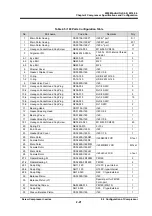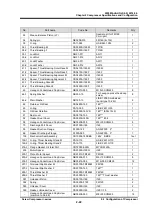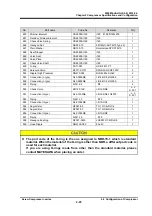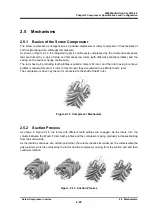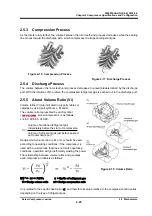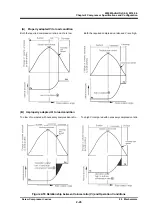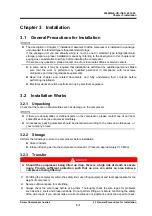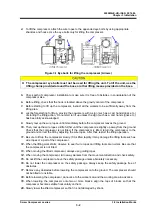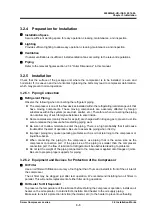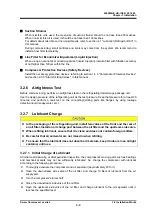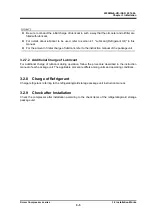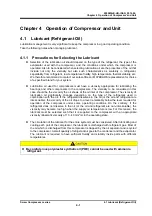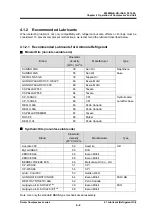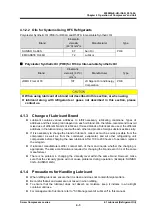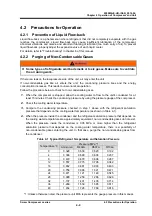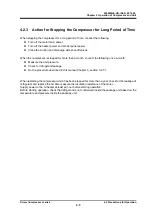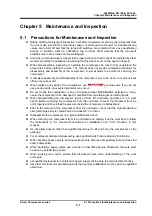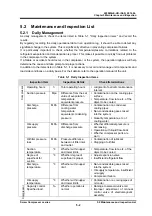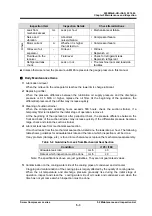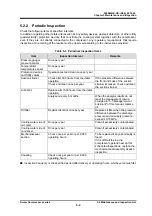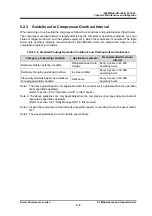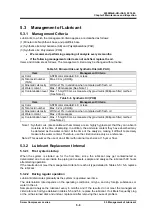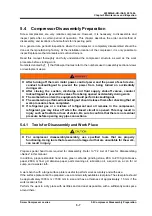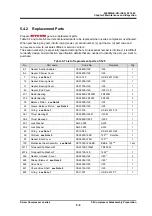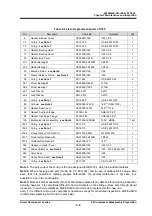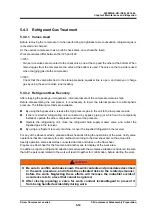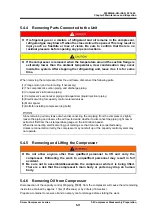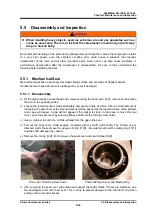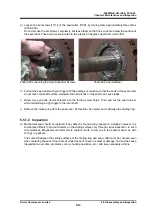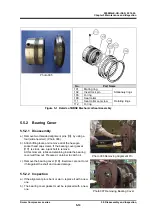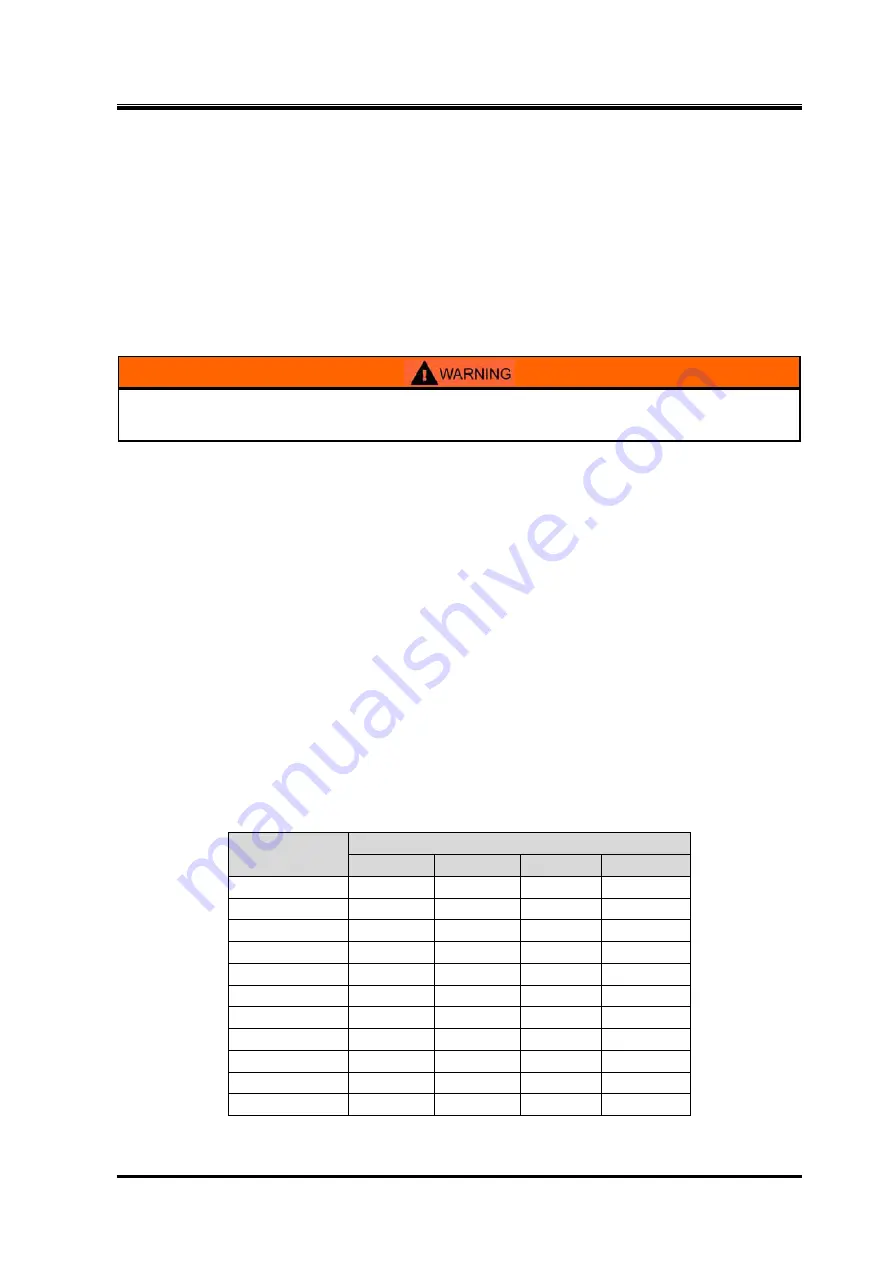
2200M4JE-HO-iS2-N_2014.04.
Chapter 4
Operation of Compressor and Unit
Screw Compressor i-series
4.2 Precautions for Operation
4-4
4.2
Precautions for Operation
4.2.1 Prevention of Liquid Flow-back
Liquid flow-back is a phenomenon where refrigerant that did not completely evaporate with the gas
reaches the compressor. Liquid flow-back may cause insufficient lubrication of the compressor,
abnormal vibrations and noises, and abnormal foaming of lubricant (too much entry of oil). To prevent
liquid flow-back, properly adjust the expansion valve of each liquid cooler.
For details, refer to "Troubleshooting" in chapter 6 of this manual.
4.2.2 Purging of Non-Condensable Gases
Some types of refrigerants emit bad smells or toxic gases. Make sure to ventilate
the air during work.
If there is a leak on the low-pressure side of the unit, air may enter the unit.
If non-condensable gas like air enters the unit, the condensing pressure rises and the energy
consumption increases. This leads to uneconomical operation.
Follow the procedure below to check for non-condensable gases.
1.
When the compressor is stopped, allow the cooling water to flow to the unit's condenser for at
least 15 minutes. Check the condensing pressure by using the pressure gauge of the compressor.
2.
Check the cooling water temperature.
3.
Compare the condensing pressure checked in step 1 above with the refrigerant saturation
pressure that depends on the cooling water temperature (as shown in Table 4-1).
4.
When the pressure inside the condenser and the refrigerant saturation pressure that depends on
the cooling water temperature are approximately equivalent, non-condensable gases do not exist.
When the pressure inside the condenser is 0.05 MPa or more higher than the refrigerant
saturation pressure that depends on the cooling water temperature, there is a possibility of
non-condensable gases entering the unit. In that case, purge the non-condensable gases from
the condenser.
Table 4-1
Typical Refrigerant Temperature and Saturation Pressure
Temperature °C
Pressure MPa *1
Ammonia
R404A
R507A
R134a
0 0.328
0.509
0.523
0.192
4 0.396
0.590
0.606
0.237
8 0.472
0.678
0.696
0.287
12 0.557
0.775
0.795
0.342
16 0.652
0.881
0.903
0.403
20 0.756
0.996
1.021
0.471
24 0.871
1.121
1.148
0.545
28 0.998
1.256
1.286
0.626
32 1.137
1.401
1.435
0.714
36 1.289
1.559
1.595
0.811
40 1.454
1.728
1.768
0.916
*1: Unless otherwise noted, the pressure unit MPa represents the gauge pressure in this manual.

